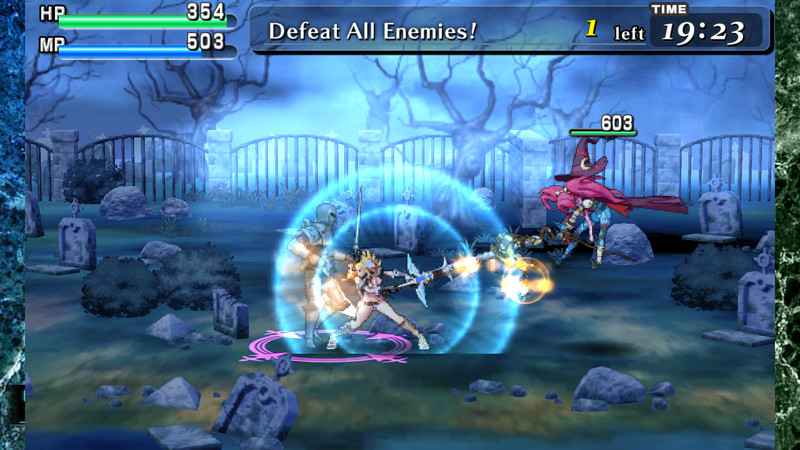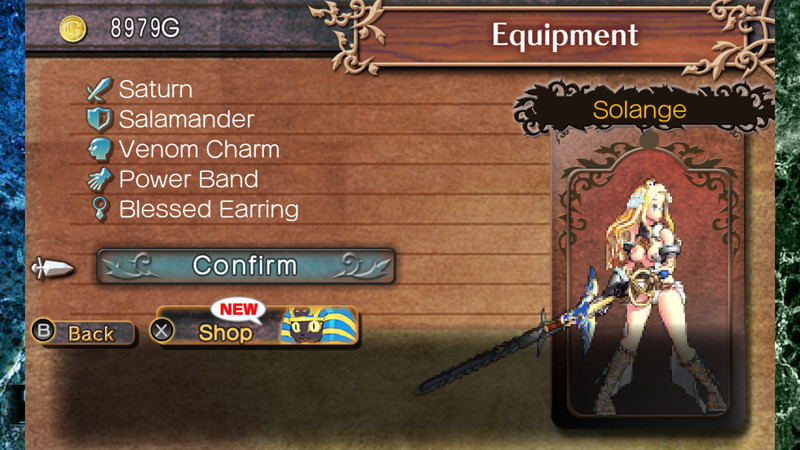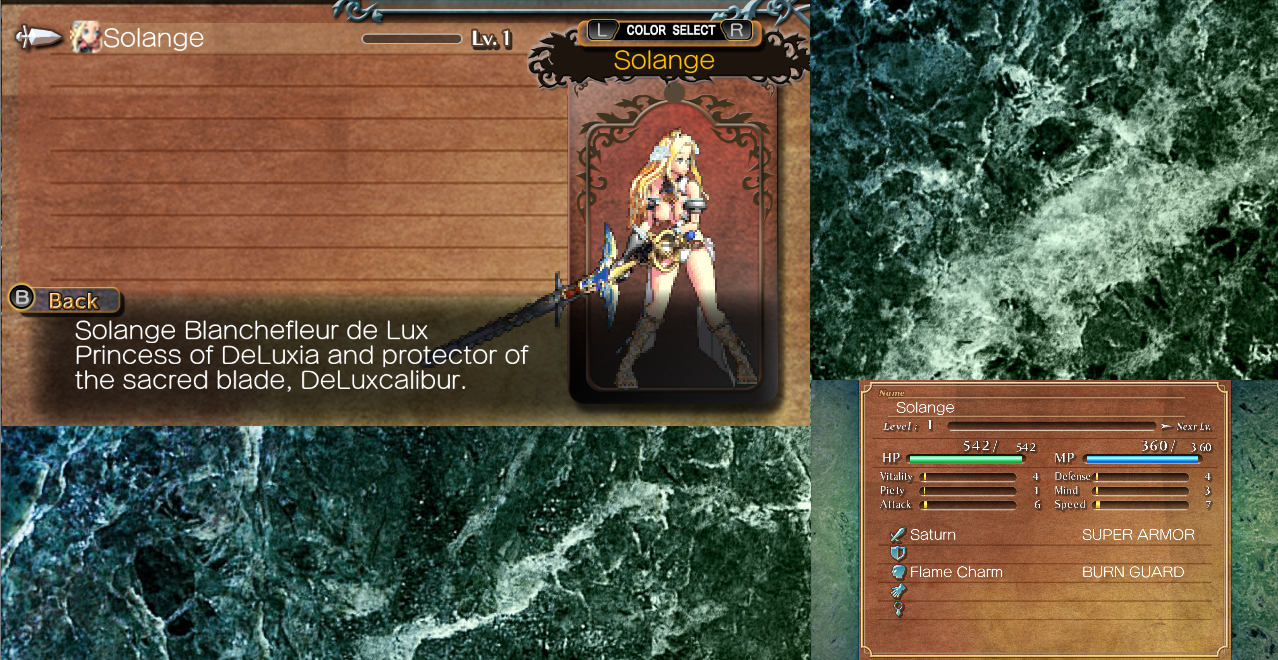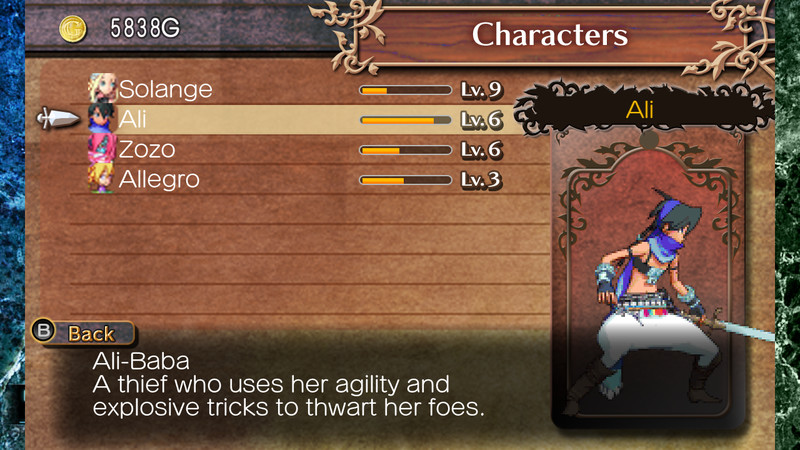Mash ups. Blending styles and genres into something new can often bring out the best of both worlds. It can also birth a new genre that pushes boundaries and creates something entirely new. Code of Princess is a hybrid game that does neither of these things. In blending side-scrolling, beat-em-up, combo-focused gameplay with relatively deep RPG mechanics and a very traditional anime style, this 3DS game now being ported to PC brings out the best in both the RPG and beat-em-up genres while simultaneously suffering from the worst elements of the genres. Code of Princess sticks tightly to the formula which has done so well for these types of games, harkening back to genre-benders like Code of Princess’ inspiration, Guardian Heroes. Makes sense, given that some of the lead developers for Guardian Heroes served as consultants on Code of Princess.
Three Major Traditions
In a world brimming with humans and monsters, guess what happens. All the standard fare: the princess and her royal kingdom are under attack! Lead four main combatants to save the kingdom, fighting through 30+ levels of button-mashing combat. There’s actually an interesting range of characters and playstyles underneath, but the core is solidly built on very traditional principles.
Code of Princess is a great, almost comforting kind of ordinary; it’s the blending of very traditional RPG, beat-em-up, and anime elements that turn the game from standard into unique. This isn’t a judgement on whether these elements are good or bad; they are sufficient to hold up the title to the standards of fans. However, you will be hard pressed to find a game that scratches this exact itch. While it might not win any awards, it will stand as a notable milestone for the very specific genre it exemplifies.
Anime Is What Anime Is
The animation, provided by noted anime studio Bones Inc., is top notch, despite some glaring, rather bouncy flaws. The cutscenes are dynamic enough, and the aesthetic matches the gameplay in terms of how it blends a traditional approach to mixed up genres. Pink-haired necromancers, cat accountants, battle nuns, names like Queen Distiny [sic] and the Kingdom of DeLuxia; this is what anime does best, and while the style is sure to turn some off at face value, otaku will love it and the rest of us can enjoy it as an archetypal approach to a classic style.
Given that this game was originally developed for Nintendo’s 3DS, there are two screens on your one screen. The port from handheld to PC isn’t flawless, but the developers have certainly paid more attention to the things that are needed to make a port more successful than most. This includes key bindings and the ability to select four different layouts for your two screens (side by side, top and bottom, a smaller bottom screen, and just the top screen, which is slightly preferential because the bottom screen is only useful when occasionally reading tooltips or character stats).
The Bones are Good
The tutorials provide a good baseline understanding of how the game works: leveling up, combos, basic attacks, magic, etc. However, teaching the player ends there. Everything else in the game is left for you to decipher. You can rebind buttons, but not actions, which makes the controls a little more unwieldy than they already are. Fortunately, most of the depth of what you need to decipher can be decently summed up by the short tooltips provided with each spell, item, or attack. This is just about the only time that the bottom screen functionality comes in handy.
With four main characters, we’re treated to a healthy variety when it comes to story progression. You can take any of these characters and see the scenes play out from different perspectives. In the end, this changes very little as it’s just a case of reused dialogue, but it does let you enjoy a different set of combat mechanics and achieves some slight reduction in repetition. A new character with new items, abilities, and levels to gain is an unsurprisingly effective tool in reinforcing the replayability of the game.
Haiii!
The range of the world features a great cast of characters, several of whom seem to be as irked as I am that their amazing character design is wasted on a fine yet standard narrative which takes place in a similarly vivid but familiar fantasy setting. Once you get past the first few scenes of clunky dialogue (which was at least well localized) and the sometimes ham-fisted character introductions, the game as a whole begins to come into its own and presents a tale that stands solidly as good fantasy anime fare.
The voice acting is intriguing. The English cast is suitably cheesy. I hesitate to say the Japanese is amazing, but I’m pretty sure it is fantastic. I say that because of the benefits of hearing an actor’s delivery, tone, and style in a language one can’t understand. It means that it sounds great whether or not it actually is. That said, the actors on all sides give it their full dedication and absolutely succeed in matching the tone and style of the overall aesthetic that the game presents. Overall, the localization effort is one of the finer parts of the game.
The Japanese style of Code of Princess is quite traditional, living up to all the tropes that anime aficionados know and love, while still maintaining a unique spread of character and environment designs. This takes the form of many good and bad things. There are some really interesting costumes, and each character’s design reflects who they are and what role they play both in the game and the story. But at the forefront of Code of Princess is the horrendous tradition (one that is not exclusively Eastern) of busty babes in undersized bikini armor wielding nonsensical oversized swords and similarly outrageous clichés. Seriously, look at our main character.

Huh.
Princess Solange Blanchefleur de Lux, in the flesh (and nothing but the flesh, nearly). This is a fuller image of the game’s cover art without the logo. Outside of the misshapen anatomy and the facial expression suggesting that Solange doesn’t quite seem to grasp the situation, or the science of slicing bread for that matter, her get up is as close to a dictionary definition of damaging oversexualization as you can get. And it’s not just the cover, her poses in game are as eyebrow-raising as the way her breathy voice cries out upon receiving damage. Her name reflects her personality, or lack thereof, throughout the game by its meaning: angel of the sun, white flower of light. It helps that the characters fighting alongside Princess Solange realize the absurdity of her presentation. The ever-widening cast of companions feels more like my friends than the Princess’ when they express wonder at why she’s dressed like that or why they are even here in the first place, just as I did.
Building On Tradition
While the first run through feels good, the replayability is pretty low without friends. The action hypnotizes in the midst of battle, which is great on the go, but with the PC version there will be a ceiling of repetitiveness that’s unavoidable. What keeps Code of Princess from being a simple one-way playthrough is its ability to mix up your characters, items and spells. You focus on different stats and styles in order to build up different approaches to different bosses. Although modern games fix these issues with procedural content generation, there’s just enough depth in the game’s RPG elements to encourage new approaches to the action elements. Even with co-op companions by your side, and the large amount of synergy that’s possible with different setups, there’s still only so much you can wring out of the total 10-15 hours of gameplay (maybe 5-8 hours of campaign if you’re better at beat-em-ups than I am) without rehashing content you’ve already beaten. A completionist could find dozens more hours in Code of Princess, but then again a completionist would.
While Code of Princess has been out on the 3DS since 2012, the PC version is available on Steam on April 14th.












Published: Apr 13, 2016 04:59 am